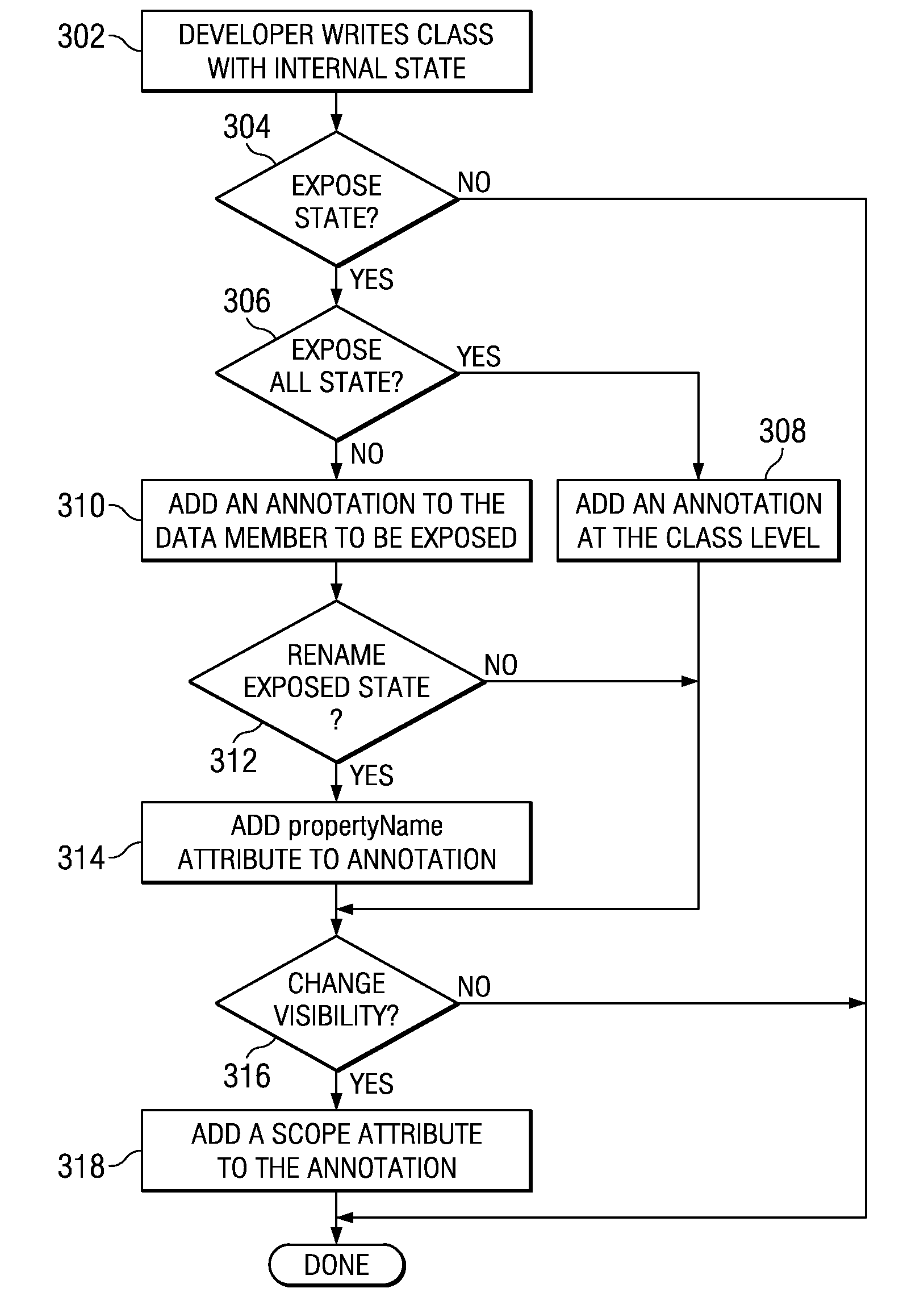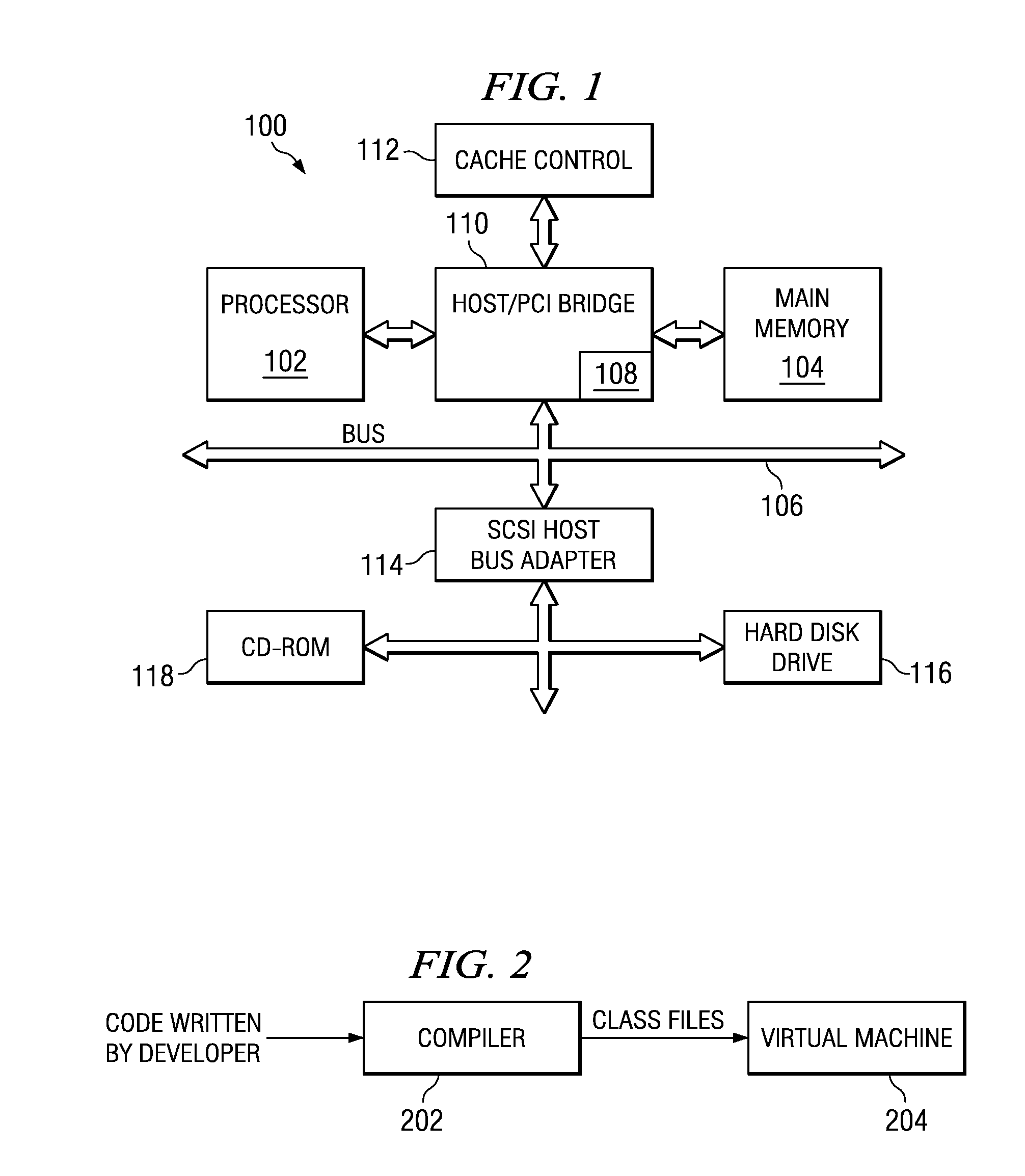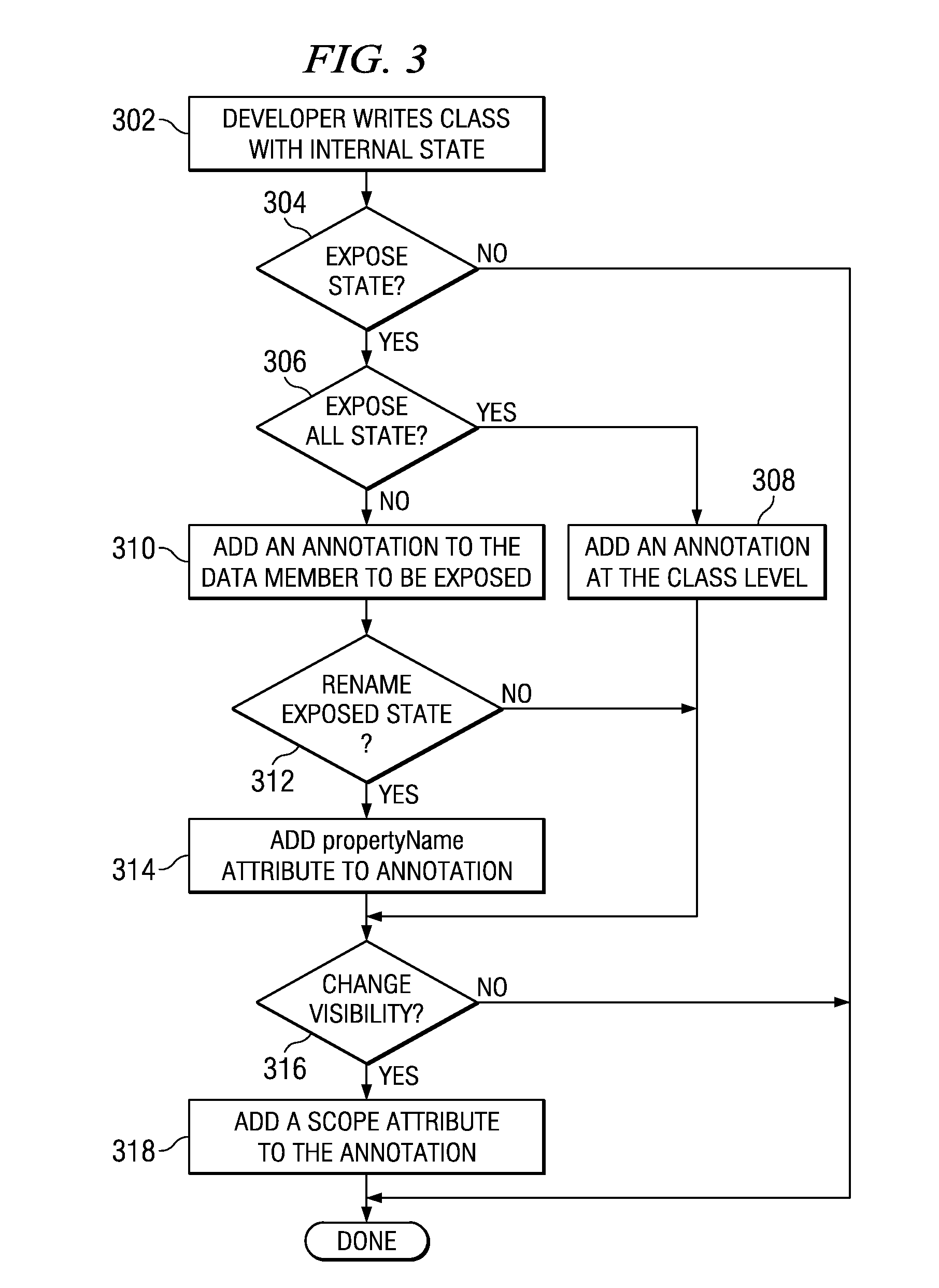Method for accessing internal states of objects in object oriented programming
- Summary
- Abstract
- Description
- Claims
- Application Information
AI Technical Summary
Benefits of technology
Problems solved by technology
Method used
Image
Examples
usage example 1
[0034]Customer c=new Customer( );[0035]c.setCustomerNumber(1000);[0036]System.out.println(“Customer number is”,[0037]c.getCustomerNumber( ));
[0038]The first line of Usage Example 1 states that a variable c refers to a new instance that is a type of the class Customer. On the second line, the statement c.setCustomerNumber is a method identification on the type Customer. This statement is intended to call this method on the object instance referenced by the variable c, in order to set the data member of the internal state customerNumber to a value of 1000. When the virtual machine calls c.setCustomerNumber as a method, the virtual machine fails to recognize this as a method that is public for the class Customer. However, in accordance with the embodiment of the invention, the virtual machine will notice the annotation @Accessable added to the class Customer, as described above in connection with Annotation Example 1. This enables the virtual machine to recognize that all the internal ...
usage example 2
[0042]
public boolean validatePerson(Person p) { / / access _SSID data member via externalized / / property namereturn p.getId( ).length( )>0;}...
[0043]The above statement, for Usage Example 2, pertains to an embodiment of the invention that uses Annotation Example D. The above statement is generally directed to a method for validating an object of the class Person, by expressing that the length of the id property is greater than 0. When the method validatePerson is called with an instance of a Person object, the getId method is called on it and the virtual machine finds that there is no such method on the class Person. However, the virtual machine will discover that for the class Person, Annotation Example B has exposed the data member String _SSID to be Gettable, with the name id. Thus, the virtual machine will return the data member value of _SSID, as the value for id. This value can then be used in Usage Example 2, to validate that the id property length is greater than 0. When the met...
PUM
 Login to View More
Login to View More Abstract
Description
Claims
Application Information
 Login to View More
Login to View More - R&D Engineer
- R&D Manager
- IP Professional
- Industry Leading Data Capabilities
- Powerful AI technology
- Patent DNA Extraction
Browse by: Latest US Patents, China's latest patents, Technical Efficacy Thesaurus, Application Domain, Technology Topic, Popular Technical Reports.
© 2024 PatSnap. All rights reserved.Legal|Privacy policy|Modern Slavery Act Transparency Statement|Sitemap|About US| Contact US: help@patsnap.com










